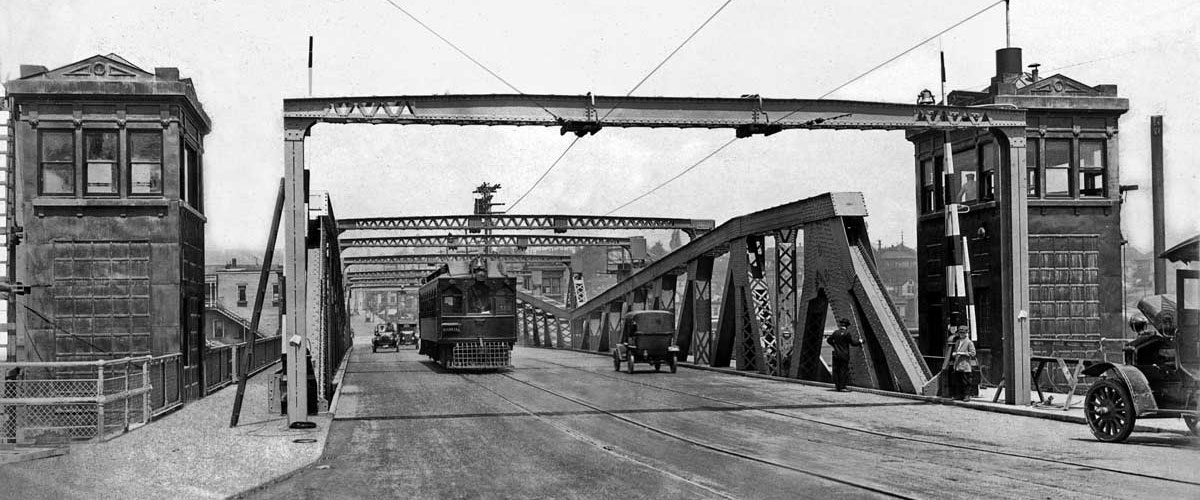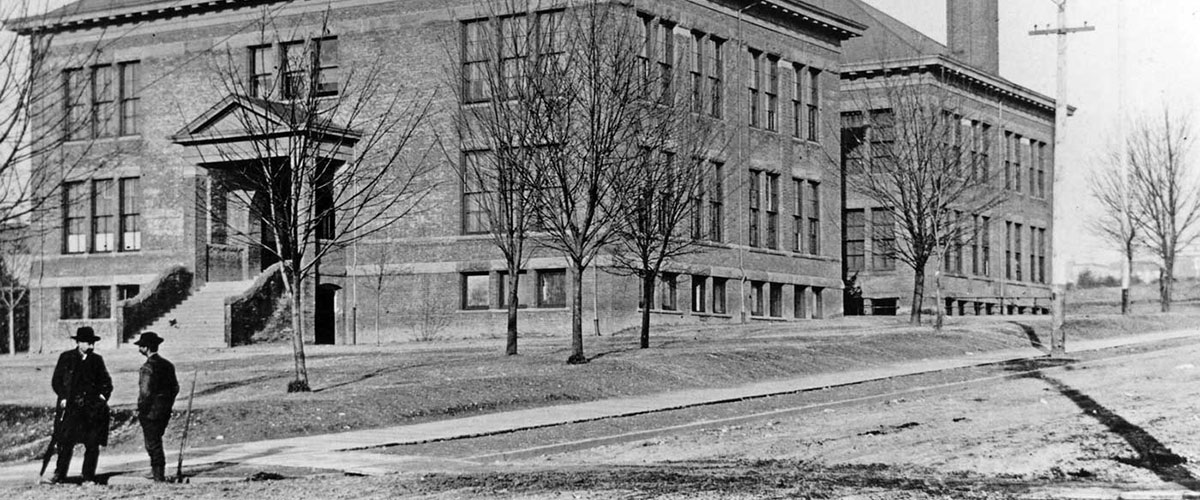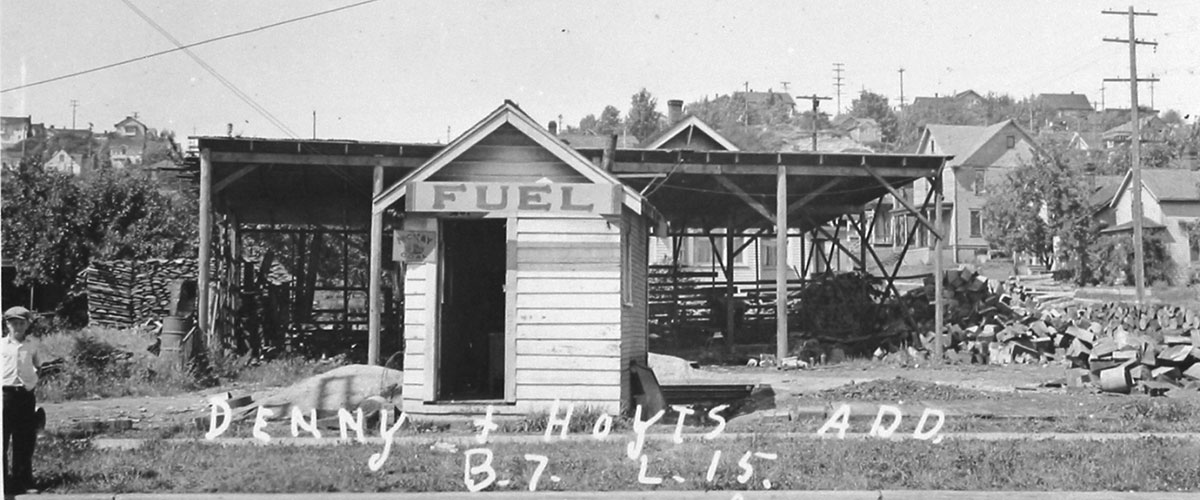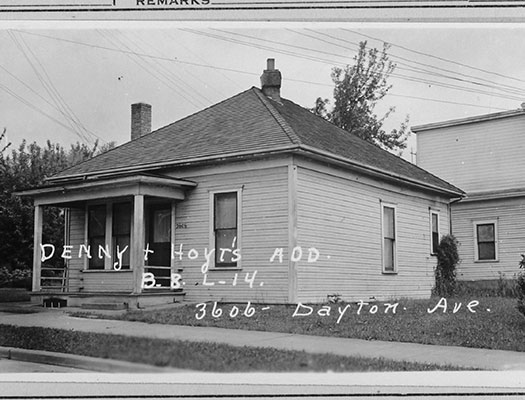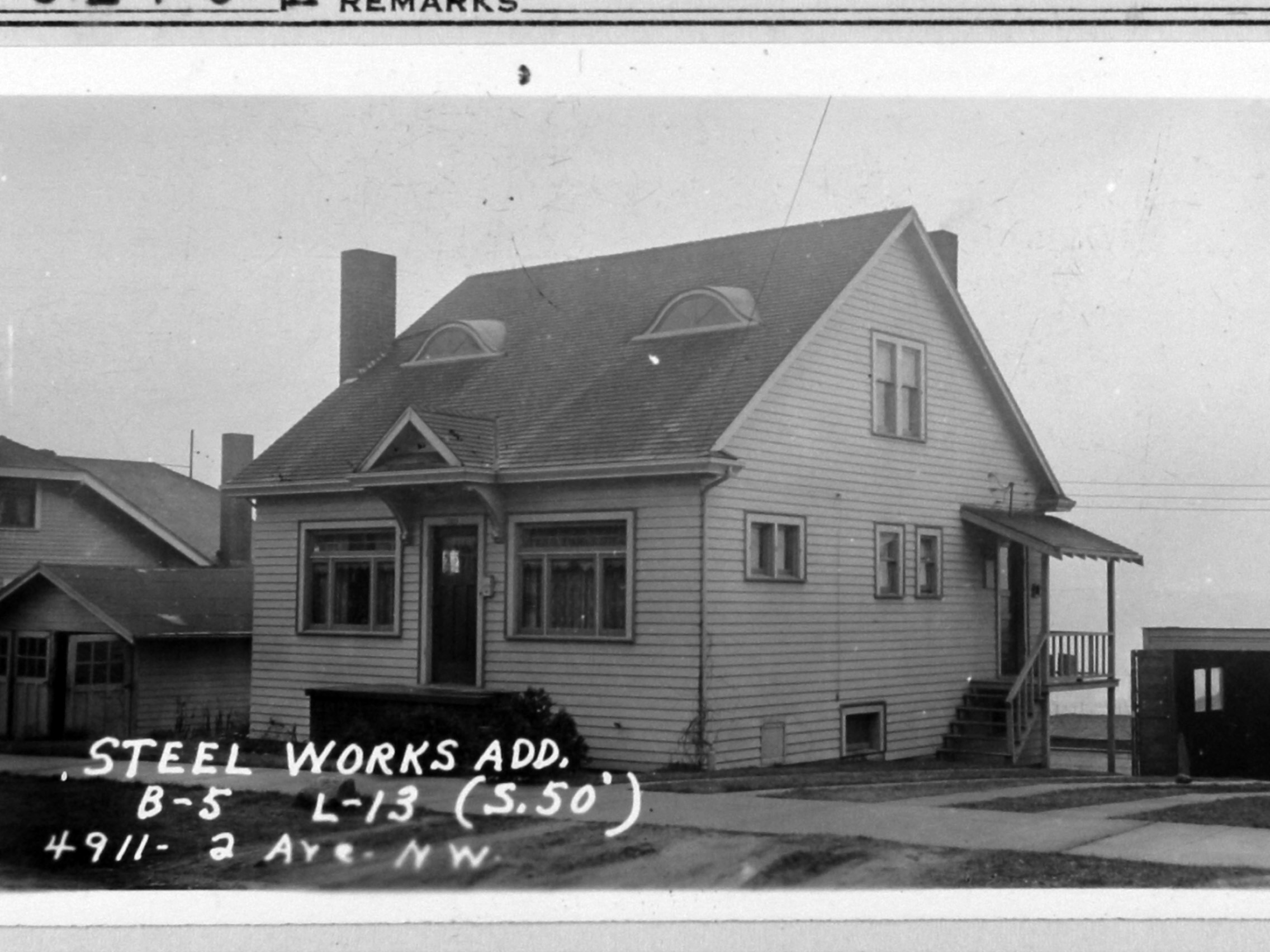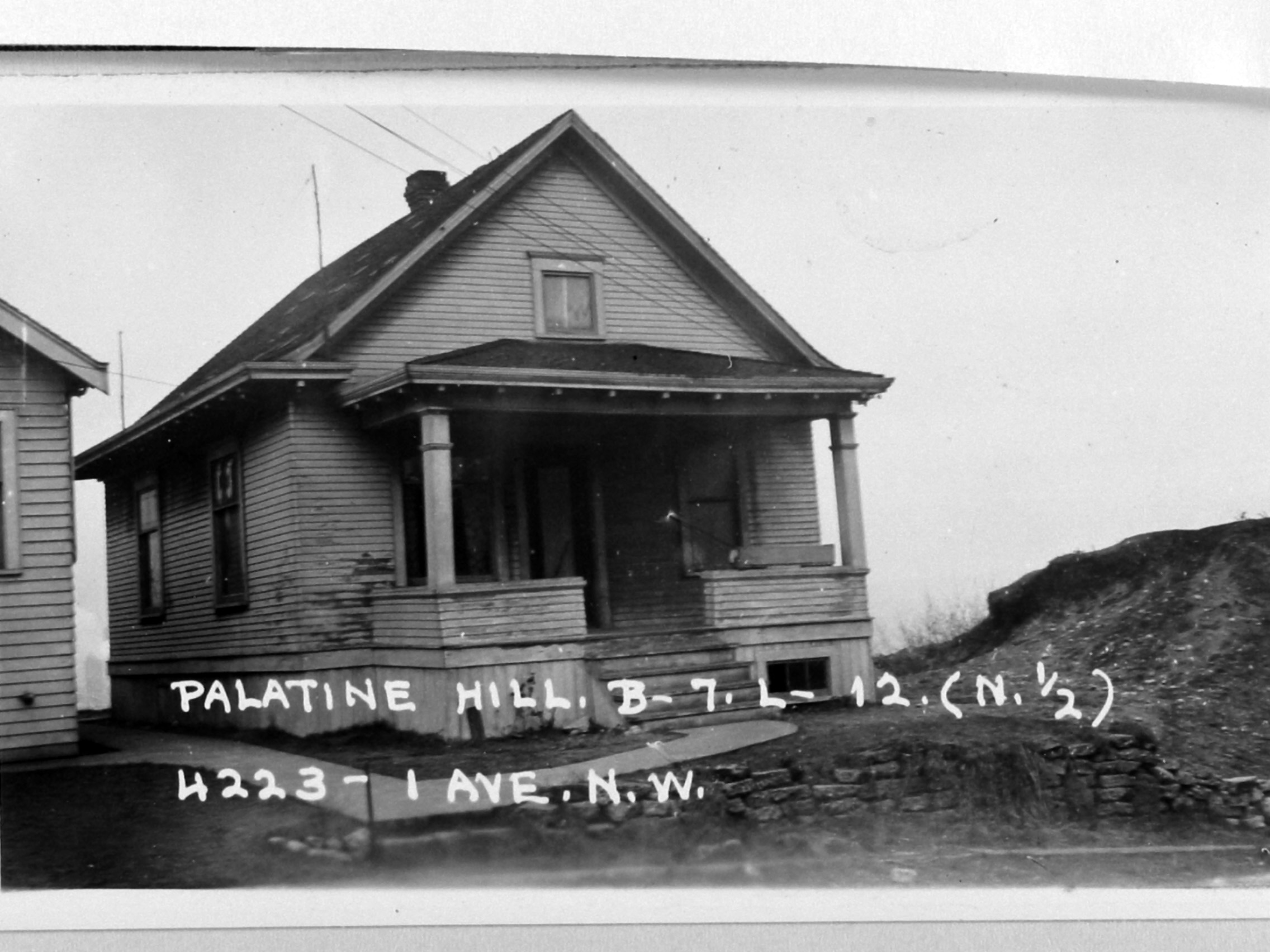Fremont History Articles
Syvert Stray, Dairyman

In the early 1900s the Fremont neighborhood was home to many Scandinavian immigrants who worked hard in small businesses.
At age 17 in 1888, Syvert Stray from Norway began the classic immigrant journey, beginning in St. Paul, Minnesota, where he worked on a dairy farm. Mr. Stray migrated Out West to Seattle in 1902. He became owner of the Seattle Dairy company at the intersection of 8th & Union Streets, where the Seattle Convention Center is now.
House History: 911 North 36th Street

The Fremont neighborhood began to be settled in the summer of 1888 and many of the earliest houses were built in a cleared area along present-day Whitman and Aurora Avenues. We know that there must have been water resources there, because Fremont had no City water system at that time. Each house had to have access to its own well-water.
The house at 911 North 36th Street is one of the oldest houses that we know of in Fremont,
South of the Bridge: Then and Now
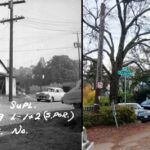
When the ship canal was completed in 1917, it created a change in the definition of the boundaries of the Fremont neighborhood. There had been a Fremont Bridge (over a small stream) before the ship canal and “Fremont” had included the area on the south side. The area as far south as Florentia Street, now on the south side of the bridge, was part of a plat called Denny & Hoyt’s which defined the original Fremont.
The lights are on again at the “Interurban.”
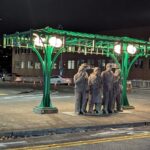
The Waiting for the Interurban statue is at the intersection of North 34th Street and Fremont Avenue. It memorializes the former rail line, called the Interurban, which went northward through Fremont to the city of Everett. This transfer point at the intersection, where City of Seattle streetcar lines also converged, did much to give Fremont the reputation of being the “center” of things, the Center of the Universe.
The Interurban statue was created by Richard Beyer in 1978.
The Hall of Giants: The Story of Fremont and the Troll
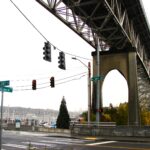
In 1990 the Fremont Arts Council sought proposals for a vacant area on North 36th Street which was directly underneath the Aurora Bridge. Immediately the folktale of the troll beneath the bridge came to mind, and this design proposal won acceptance.
The Fremont Troll became so popular that in 2005, the City of Seattle changed the name of the north-south avenue leading to it, to Troll Avenue. This made it much easier for visitors to Seattle to find the Fremont Troll.
Who was B.F. Day?
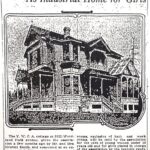
Benjamin Franklin Day was 45 years old when he and his wife Frances arrived in Seattle in the spring of 1880.
Born in Ohio, B.F. Day had farmed in Illinois, Iowa and Missouri. Biographical notes indicate that Day wanted to leave farming because of the hard physical labor. We don’t know why he chose to come to Seattle, but as a former farmer who had raised corn & hogs, B.F. Day would have known the importance of railroads in moving products to market. In the 1870s-1880s there was constant speculation about railroad routes across the USA.
The Burke-Gilman Trail in Fremont
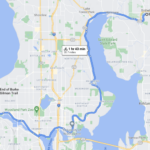
The Burke-Gilman Trail, a walking-biking corridor which passes through Fremont, is the legacy of early Seattle movers-and-shakers, Thomas Burke and Daniel Gilman. The energy and activism of these men characterized the era of the 1870s-1880s when the population of Seattle began to grow and the city sought to make something of itself. Burke & Gilman transformed the city with their promotion of transportation projects.
Early Seattleites had already noted that there was a creek flowing westward from Lake Union through what is now Fremont and on out to Puget Sound.
C.P. Stone, Namesake of Stone Way
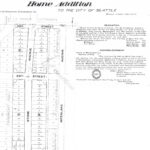
Corliss P. Stone was an early businessman, real estate investor, and civic activist of Seattle.
Stone was born in Vermont in 1838 and worked in what was called a dry goods store, meaning household supplies not including food. Some dry goods stores eventually evolved to sell clothing only.
As a young man Stone traveled to San Francisco to investigate the business climate and then he came to the Pacific Northwest. He worked for a time at Port Madison (north end of Bainbridge Island) which was the site of a lumber mill.
Plats of Fremont
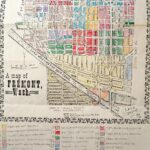
One of the ways to trace neighborhood history is by its land use, including plats of land laid out with streets and house lots. This map of the Fremont neighborhood in Seattle is marked with plats and their names.
The founding of Fremont in 1888 was in the area closest to the ship canal, although at that time it was only a small stream called The Outlet. The plat, which was named Denny &
House History: 4202 Phinney Ave North
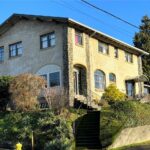
Captain Herbert E. Farnsworth made the classic Western migration of a Civil War veteran after the war. Born in New York State, after the end of the war in 1865, Captain Farnsworth married. The Farnsworth’s first daughter was born in New York and by the time of the birth of their second daughter in 1871, the family was living in the town of Kidder, Caldwell County, Missouri. It was a railroad town and Captain Farnsworth, who worked as a carpenter,
House History: 1109 North 47th Street
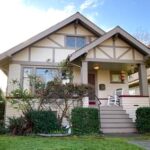
This house was built in 1909 for an estimated construction cost of $1,350, according to the building permit. The builder was Albert J. Carr, a contractor who lived in Wallingford. He was known for building houses throughout the University District, Wallingford and Fremont neighborhoods.
The house is a “plan book” design in Craftsman Bungalow style. The plan-book house could be built by a contractor without the use of an architect, and the construction was done by skilled craftsmen such as carpenters,
Fremont Public Art: Late for the Interurban
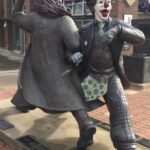
East of the Fremont Bridge on North 34th Street, near Adobe Plaza, Seattle’s favorite clown, JP Patches, and his friend, Gertrude, are forever “Late for the Interurban” in these bronze statues created by Washington sculptor Kevin Pettelle. The Interurban was the train to Everett with its transfer point by the Fremont Bridge, referenced by the Waiting for the Interurban statue there.
Installed in 2008 to commemorate the 50th anniversary of the J.P.
Fremont’s Streetcar Loading Platform
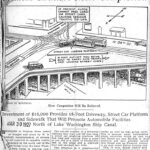
In 1927 a streetcar loading platform and cutoff route for cars was created at the intersection of Fremont Avenue North and North 34th Street. This intersection is familiar to us today as the site of the Waiting for the Interurban statue.
As car traffic increased in the 1920s it was found that when the city streetcar or the Interurban rail cars stopped to load passengers at North 34th Street, northbound auto traffic would back up onto the Fremont Bridge.
Fremont’s Grand Union Streetcar Switch
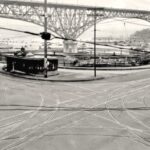
One of the reasons why Fremont was long regarded as the Center of the Universe was because of its convergence of streetcar lines. At the north end of the Fremont Bridge, in the spot where there is now the Waiting for the Interurban sculpture, there was a Grand Union track layout for streetcars to turn or go straight ahead, accommodating all the lines that passed through. The car barn for maintenance was located just west of here,
Fremont Public Art: The Berlin 1936 Crew Racer
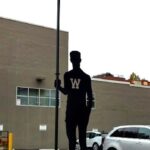
The Data 1 office building at 744 North 34th Street was completed in 2017 and has outdoor artworks on each side of the building. At one side, underneath the Aurora Bridge, is a fragment of the Berlin Wall which tells of the triumph of the human spirit when Communism fell in 1989.
At the other corner of the Data 1 building (on the left as you look at it) is a metal sculpture of a man holding an oar,
Fremont Public Art: The Berlin Wall Fragment
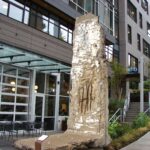
The Berlin Wall divided East and West Germany and was torn down by its citizens on November 9, 1989, during the collapse of dictatorial rule of the Communist countries of Eastern Europe. We remember this significant historical event at the Berlin Wall and what it represents, the freedom of self-rule.
The Berlin Wall was completely demolished at that time, and fragments were carried away as mementos. The fragment which has been installed as public art in Fremont,
Fremont Public Art: The Lenin Statue
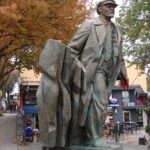
In 1981, the Communist Party of Czechoslovakia commissioned Bulgarian sculptor Emil Venkov to create a statue that portrayed Vladimir Lenin as a bringer of revolution. Briefly installed in Poprav, Czechoslovakia, the 16-foot bronze statue was sent to a scrapyard after the 1989 fall of Communism.
The statue in the scrapyard was discovered by Lewis Carpenter, an English teacher from Issaquah, Washington, who was teaching in Poprav and knew the artist. Purchasing the statue with his own funds,
The Fremont Neighborhood in Seattle is Founded in 1888
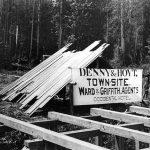
Each neighborhood of Seattle proudly waves the banner of its unique name, and yet many were named in a similar way: by real estate investors. Fremont in Seattle was also named by real estate investors. What made the Seattle neighborhood called Fremont stand out from others, was its good location, its jump-start after Seattle’s Great Fire of 1889, and its vigorous developers who utilized the growing streetcar system to advantage.
House History: 411 NW 42nd Street
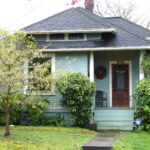
The western part of Fremont, west of 3rd Ave NW, once had its own railroad stop called Ross.
John & Mary Jane Ross were homestead land claimants in the 1850s and lived along the stream which much later (1917) became the ship canal. After John Ross died in 1886, Mary Jane began to sell some of their land holdings for income to support herself and her children. In 1888 real estate investors bought some of the Ross property between 3rd to 6th Avenues NW and platted it into residential lots.

